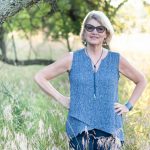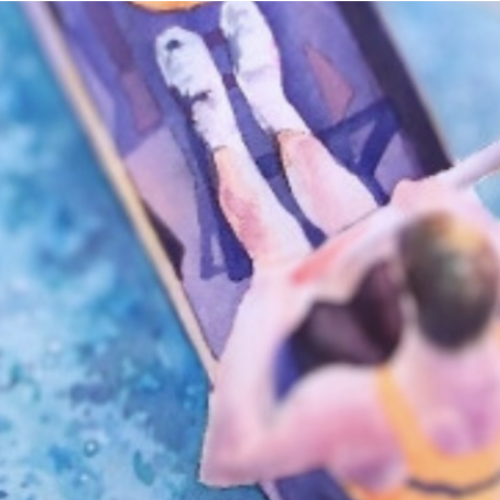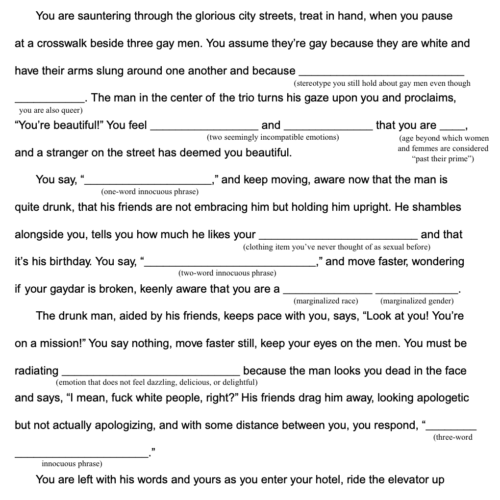1. The nurses liked her; she liked them. She had that elder wisdom smile. Maybe that’s why they did what was forbidden. Or maybe because I cried so hard after they called. “Can I see her?” I’d sobbed. We had promised to be with her.
2. The day my mother dies, evening arrives with its swollen brow like a purple bruise to the forehead. I speed the long miles to the nursing facility at the edge of town and pull in just as first snow slushes the lot. Dusk, nearly dark. I hear the gunshots out in the fields as I walk toward the empty lobby; the second day of hunting season in the north, death among the corn rows. The nurse at the door waves me in, takes my temperature, gives me a fresh mask, walks me down a hall I have walked a hundred times or more, but after so long, it’s austere and unfamiliar. I have not been inside since February 2020. Now, November.
3. She died alone. Well, they aren’t sure. Maybe the aide was there, maybe not. I’m afraid to ask questions. Questions must be asked on the phone; the staff is swamped, tired; they want to go home to their families; their voices are hoarse with that strain of people searching for words. I want to ask each nurse for every detail, every nuance of her passing, to pursue the details down to the bones. Because I promised her. Because I couldn’t be with her. But also, I’m afraid to know.
4. I have not seen her for six weeks, since that windy day on the outdoor patio, allowed only when the numbers were low. All of us masked. The wind had lifted her blanket some. She said to me and my sister, “Aren’t you girls cold?” Meaning that she was. Normally, I saw her once a week. But now, four times in eight months, never touching. I tried to explain through the mask, “It’s like the Spanish flu.” Her face cleared for a moment, she who was born just after that virus made its rounds of the planet, 1921. She lived the time between two pandemics, nearly a century.
5. I was not supposed to see her body, not supposed to have been able to touch her. I did. I held her hand. I kissed her forehead. I called my sister in Colorado and put the phone in Mom’s hands so she could speak to her one last time—even though Mom was gone. I took Mom’s picture. Even though she was dead. Maybe that’s morbid. It felt historical. Her photo in death is like the death masks of past centuries. Keats. Blake. Dante—blank as the dead. I linger over the blankness of that photo.
6. Did I miss cues? Days before she died those same nurses asked if she could be tested for Covid. Did they? One aide noted congestion—but she coughed often. Another said crackling in her lungs. We ordered labs, but she died before they could be run. I’d asked if we should get Hospice. The nurse said yes, but when I called the social worker, she said no one could enter. I asked if she was actively dying. They said no. But they had reasons for these questions, didn’t they? Suspicions? Signs they would recognize. The death certificate says heart failure. She was old, but she always had a strong heart.
7. They had placed a rolled towel under her chin so her mouth remained closed. She was dressed in a fresh robe, lavender as her fingertips in death. Her eyelids were the color of yesterday, her hair combed. The aides had done all that. I told her I was grateful that she had taught me to sew, thanked her for everything but especially that. I told her I was sorry I couldn’t have stood up to her more lovingly. I didn’t say I loved her. Or maybe I did. I don’t remember. Just then, a nurse entered the room on her cloud shoes. She said, “She is with God now.” I thanked her, but asked her to turn off the music. So I could pray I said. I had no intention of praying. I wanted to live the silence—maybe that’s like praying. Or grief. I sat in the folding chair and placed my hand on Mom’s. I breathed and felt my breath and tried to live that breath, to feel only breath, to be inside the breaths. For a moment after, her skin was warmed where my hand had been.
8. Before that, she was alive. It was not a good life; but we could touch it. In her room, in her bed with Gunsmoke or Lucy reruns blaring. What kept her here were weekly visits, pictures of family, carrot cake from home (her favorite) or a burger cut into eighths and squished. Finger food. She could pick pieces up, chew, make little satisfied hums. And outside, all over the county, Covid cases rising like the bloom from a barn fire, straight up and blocking the light.
9. Only after do I remember how the nurse paused when I asked to see Mom. Only after do I put it together. “Come as quick as you can. We won’t call the funeral home until after you’ve seen her.” Only after do I realize what they risked—both health and job—though they are too essential to be fired. Only after do I think about our lives. Theirs. Mine. Other residents’. Too late, I hear the county positivity rate is the highest in the state. I would still have gone. What does that say about human nature, love and grief?
10. An aide walked me out. She said she was so sorry. “Do you know if she was alone?” I asked. She shook her head. She touched my sleeve delicately. There were shadows the color of a hunter’s November sky under her eyes.

Anne-Marie Oomen
Anne-Marie Oomen wrote Lake Michigan Mermaid with Linda Nemec Foster (Michigan Notable Book, 2019), Love, Sex and 4-H (Next Generation Indie Award for Memoir), Pulling Down the Barn (Michigan Notable Book); and Uncoded Woman (poetry), among others. She edited ELEMENTAL: A Collection of Michigan Nonfiction (also a Michigan Notable Book). She teaches at Solstice MFA (MA), Interlochen’s College of Creative Arts (MI), and conferences throughout the country.




